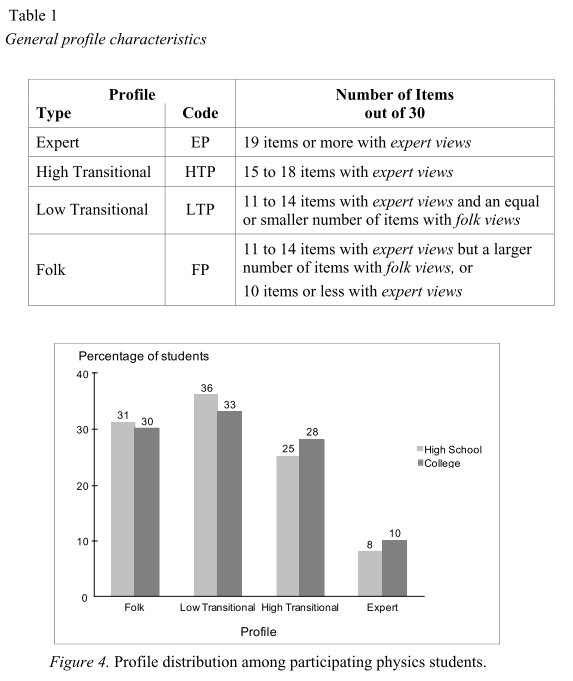Developed by Ibrahim Halloun
| Purpose | To characterize student views about knowing and learning science and assess the relation of these views to achievement in science courses. |
|---|---|
| Format | Pre/post, Multiple-choice |
| Duration | 40 min |
| Focus | Beliefs / Attitudes (structure and validity of scientific knowledge, scientific methodology, learnability of science, reflective thinking, personal relevance of science) |
| Level | Intro college, High school |
Sample questions from the VASS:


more details
This is the second highest level of research validation, corresponding to at least 5 of the validation categories below.
Research Validation Summary
Based on Research Into:
- Student thinking
Studied Using:
- Student interviews
- Expert review
- Appropriate statistical analysis
Research Conducted:
- At multiple institutions
- By multiple research groups
- Peer-reviewed publication
The contrasting alternatives design (CAD) questions on the VASS were developed starting with a literature review and construction of a theoretical framework. This framework was used to create an expert/folk taxonomy of student views about science, which underwent expert review. The taxonomy was used to write open-ended and CAD questions, which were given to students, who were later interviewed about their responses. The questions went through several iterations of revision. They VASS questions underwent expert review, and were found to measure what the developers intended. Experts also agreed on the “expert-like” answer to each question. The internal consistency, and test-retest reliability were tested and reasonable results found. The VASS has been given to thousands of students in many institutions and countries. The results are published in four papers.
References
- D. Desbien, Modeling Discourse Management Compared to Other Classroom Management Styles in University Physics, Arizona State University, 2002.
- I. Halloun, Views About Science and physics achievement: The VASS story, presented at the AIP Conference Proceedings, College Park, Maryland (USA), 1996.
- I. Halloun, Evaluation of the Impact of the New Physics Curriculum on the Conceptual Profiles of Secondary Students, 2007.
- I. Halloun and D. Hestenes, Interpreting VASS dimensions and profiles for physics students, Sci. & Educ. 7 (6), 553 (1998).
PhysPort provides translations of assessments as a service to our users, but does not endorse the accuracy or validity of translations. Assessments validated for one language and culture may not be valid for other languages and cultures.
| Language | Translator(s) | |
|---|---|---|
| Japanese | Sachiko Tosa |
If you know of a translation that we don't have yet, or if you would like to translate this assessment, please contact us!
Download the VASS answer key.
| Typical Results |
|---|
Typical results from Halloun and Hestenes 1998:
|
The latest version of the VASS for physics, released in 2007, is version P05.07. Earlier versions include P12, released in 2001, and P204, released in 2004. There are also versions of the VASS for chemistry, biology, geology, general science, and mathematics available from the developer's website. Version numbers starting with P are for physics, while those starting with B or C are for biology or chemistry, respectively.





